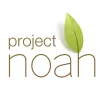
Digital Citizenship Week is October 20–24!
Join teachers worldwide to promote a healthy, positive approach to media and tech.
Take a look inside 6 images
Project Noah
Pros: This is a real opportunity for students to gather and share information about biodiversity.
Cons: Additional extension activities would allow kids to do more with the collected data.
Bottom Line: Project Noah is a free and easy way to take part in biodiversity research with the support of a knowledgeable and global community.
Teachers can use Project Noah to engage students in hands-on scientific research that is both authentic and relevant. Kids can participate in collaborative missions with users around the globe, adding their data to a collection of information on species diversity. Kids can chat about, comment on, and follow the "spottings" of other users. For example, the Global Schoolyard Blitz lets kids collect and share wildlife observations with other schools from around the world. The Butterflies and Moths of the World Mission lets kids share pictures and the locations of butterflies in their natural habitats.
Also, within the Education portion, teachers can set up custom missions. This allows you to design specific classroom missions and limit online interaction to just your class.
Project Noah is a vehicle for kids to share their nature explorations. It can be used by anyone from elementary school students to seasoned scientists to collect data about species diversity. Users share images and the locations of organisms they've spotted. They can participate in specific missions, too, collecting data as part of a larger online community, and this data can form a more detailed picture of species diversity in a local area.
The best use of Project Noah will be to get kids engaged in conservation and scientific inquiry. Kids will feel empowered that data from the site is used in actual research. It can also help them recognize the ecological diversity present in their own communities. The site can be used as a tool to survey biodiversity or invasive species in an area near your school. Though it reflects how scientists collaborate and share data online, student work is limited to taking pictures and describing organisms; some students might not find this very exciting.
To set up Project Noah for the classroom, teachers must first register using a specific email or social media account. Teachers can then set up a class under the Education menu. Unfortunately, adding students is cumbersome. Students are assigned a username like mrssmithbiology23 and a random password. Although students can update their profile pictures, they can't change their usernames or passwords inside the Education site. It would be easier if Project Noah provided a teacher-specific access code so students could self-register and link to a class. Adding tutorials to help teachers set up classes would also be a helpful improvement.












